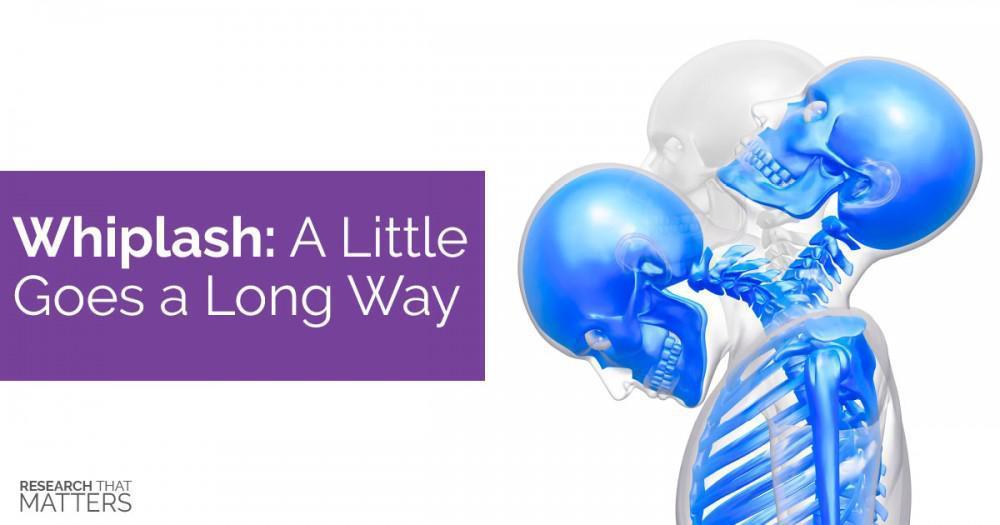
“Whiplash” is typically used to describe a neck injury received in a car accident, but in reality it’s a very common injury not exclusive to high-speed collisions. You see, whiplash injuries are actually just a strain/sprain injury of the neck. Strains occur when tendons, which connect a muscle to bone, become overstretched and may even tear. Sprain injuries are the same, except that they occur in ligaments, which hold two bones together.
Strain/Sprain injuries can happen in many different circumstances: sports injuries, falls, even riding a rollercoaster or sneezing can give you a strain/sprain! Common symptoms of whiplash injury include neck pain, headaches, and shooting pain into the shoulders or arms.
I also want to mention that your ligaments and tendons aren’t the only things that may suffer during an accident. Facets, or special joints in the spine that direct movement, along with your spinal discs which provide cushion between vertebra (bones of the spine) are put under immense stress in a collision and may likewise become injured, resulting in pain and stiffness.
Because strain/sprain injuries can occur from things as simple as a sneeze, it follows that whiplash injuries can occur from ‘slow’ accidents.
Things as simple as a fender bender in slow, bumper-to-bumper rush hour traffic can cause major damage to your body even if it didn’t do any significant damage to your car. Lots more than speed determines what kind of injury you get in a car accident.
Here are a few:
- Car sizes: A large car striking a small car will create more force at lower speeds
- Position: How was your posture in the accident? Was your head turned to one side? Were you tensed or relaxed? All these factors affect how much damage your spinal joints take in an accident.
- Prior condition: Even if your body felt fine before an accident, it doesn’t mean you weren’t set up to injure yourself in the near future anyway. Lots of things can predispose us to serious injury even without pain being present.
- Location: Where were you struck? Side, front, and back collisions al act differently on your body.
Finally, remember that pain is usually the last symptom to appear and first to go away when we suffer an injury. This means that even if you don’t feel pain right after an accident, it doesn’t mean you’re 100% okay. Have you ever worked out for the first time in a while, and 2-3 days later were sore all over? The same may happen with an accident.
This is why we encourage anyone who has recently been in an accident to come in for an exam to assess whether or not they have a ‘hidden’ injury and begin a treatment plan to ensure you don’t end up in pain weeks, months, or even years down the line because of your accident.
So if you’ve been in an accident, give your Premier Chiropractic Clinic in Gilbert, Better Chiropractic, a call NOW to take proper care of your body!
We’ll leave you with a few statistics research has recently shown us regarding Automobile Accidents and Chiropractic:
- More than 1.5 million whiplash injuries happen every year, and many are due to low impact collisions.
- Chiropractic adjustments and massage are recommended as an effective treatment for treating neck pain after a whiplash injury.




